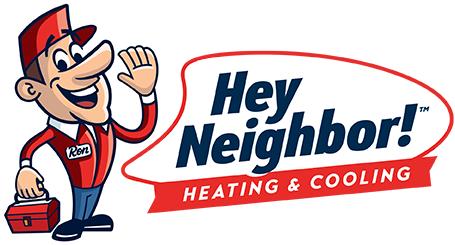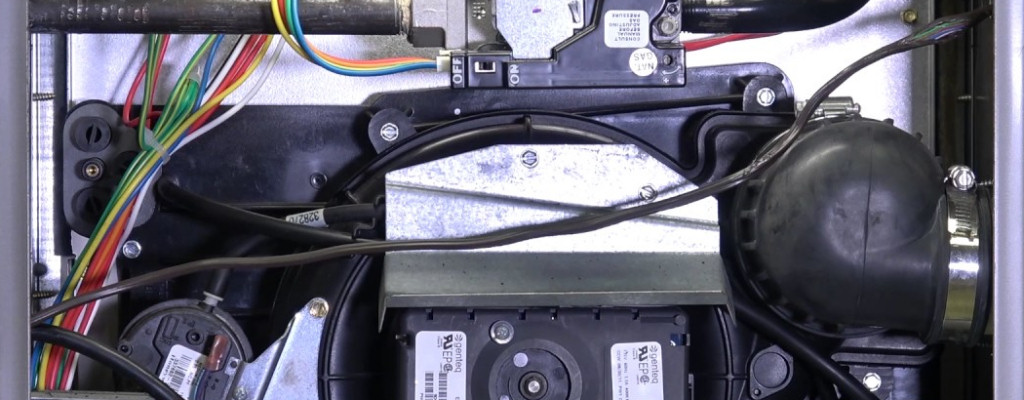Although today’s furnaces can generate heat using various forms of energy, natural gas is arguably the most popular option. Hey Neighbor Heating & Cooling pros are here to help you understand how your gas furnace functions, so you can identify any potential problems in your Northeast Ohio home’s heating system.
The thermostat
You could say that your gas furnace begins the process of warming your home when you turn on your heating system, but the reality is that the thermostat runs the show.
In simplest terms, your thermostat is a temperature-activated switching device that communicates your home’s inside temperature to your gas furnace’s control board. Once you set your thermostat to a programmed temperature, your heating and cooling system will cycle on and off regularly to keep your home near this set level.
The ignitor
When your thermostat signals your gas furnace to start your heating system, the first thing that happens is your ignitor engages. Although some older gas furnaces may use a pilot light, modern gas furnaces have a much safer electronic starter.
An old-fashioned pilot light operated by having a regulator supply a small amount of gas to keep a small flame burning, which then ignited the burner when the heating process was started. If the pilot light went out, you’d risk dangerous gas could potentially leak into your home.
Fortunately, a modern electronic starter uses an element similar to a light bulb filament to ignite the burner instead. When your thermostat detects a preset temperature, it signals the furnace’s electronic starter to send an electric current to the filament, creating heat that lights the natural gas burner.
The combustion chamber
A modern gas furnace’s ignitor ignites the fuel in the combustion chamber, which is the area inside the unit where natural gas and oxygen mix. The system uses a draft hood or venting to take in a controlled amount of oxygen to produce clean and efficient combustion.
This same venting releases the combustion by-products to the outside air. Generally, standard-efficiency flues are made of galvanized steel, while high-efficiency units use polypropylene, which is easy to install and maintain.
It’s essential to properly maintain the combustion chamber, to ensure your indoor air quality remains safe and healthy. All of the natural gas should be completely burned inside the combustion chamber. Please call us if you think your furnace isn’t burning the gas properly or completely.
The heat exchanger
Above the combustion chamber, you’ll find the heat exchanger, which transfers the heat generated by combustion to produce nice, warm air for your home. Heat exchangers typically use a series of metal tubes to transfer heat efficiently. Once these heated tubes arrive at the proper temperature, the motors in your gas furnace turn on and blow the hot air throughout your air duct system. As the air cools and returns to the furnace, the cycle repeats until the thermostat’s target temperature is reached and signals the furnace to turn off.
Some high-efficiency gas furnaces may also contain heat exchangers with curved surfaces. This advanced design directs the airflow over more surface area, so the unit generates more heat with less fuel.
It’s critical to ensure your heat exchanger is in good working order because a faulty exchanger could leak dangerous carbon monoxide (CO) gas into your home.
The inducer and blower motors
Your HVAC system’s fan motors direct the cooler air from your home’s return ducts to the hot heat exchanger to be heated once again. Some furnaces have a two-speed blower that’s programmed when the furnace is installed. In contrast, high-efficiency furnaces usually have a variable speed blower that can self-modulate fan speeds. Overall, variable-speed motors are considerably more energy-efficient than conventional 2-speed systems.
You can rely on Hey Neighbor for all your furnace needs!
Whether you need a new gas furnace, repair to your existing system, or seasonal maintenance, turn to Hey Neighbor Heating & Cooling for help. Our trained and certified experts provide high-quality service to ensure that your gas furnace continues to operate optimally for a long time to come. Call 844-HEY-NEIGHBOR or request service online today.


Comments are closed